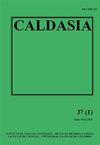Ensamblajes de anuros y heterogeneidad espacial en un ecosistema de páramo de Colombia
IF 0.3
4区 生物学
Q4 PLANT SCIENCES
引用次数: 5
Abstract
The present study sought to determine the effect of spatial heterogeneity, a product of the different vegetation mosaics and environmental and structural gradients of the paramo, on the structure of anuran assemblage in a sector of Chingaza National Park. Environmental and structural variables were recorded from aerial photographs taken with a drone in six vegetation mosaics identifying landscape metrics to areas of influence of 50 and 100 m. At the end of 162 hours/person of sampling, we found 45 individuals belonging to four species. The variables mostly related to the structure of anuran assemblages varied with the spatial scale of analysis as follows: (a) at the level of the environmental-structural gradient in the vegetation mosaics (microhabitat scale), the percentage of frailejones, number of trunks of fallen frailejones, air temperature, and wind speed were the most determinant; (b) at the landscape unit level, at an area of influence of 50 m, the effect of the number of classes and in particular, the extent of peatland and peatland vegetation classes was evidenced; and (c) at an area of influence of 100 m scale, the configuration of the landscape units was most important, mainly the extension of the classes of peatland and low scrubs intermixed with pajonal and frailejonal. The results suggest that anurans present a scale-dependent response to spatial heterogeneity, an aspect that should be considered in the protected area's management plans when structuring population monitoring schemes.哥伦比亚paramo生态系统中无尾猿的聚集与空间异质性
本研究试图确定空间异质性对钦加扎国家公园一个区域的anuran组合结构的影响,空间异质性是不同植被镶嵌以及帕拉莫的环境和结构梯度的产物。用无人机在六个植被镶嵌图中拍摄的航空照片记录了环境和结构变量,确定了50米和100米影响区域的景观指标。在162小时/人的采样结束时,我们发现了属于四个物种的45个个体。主要与无尾虫群落结构相关的变量随分析的空间尺度变化如下:(a)在植被镶嵌的环境结构梯度水平上(微生境尺度),无尾虫的百分比、倒下的无尾虫树干数量、气温和风速是最具决定性的;(b) 在景观单元层面,在50米的影响区域,证明了类别数量的影响,特别是泥炭地和泥炭地植被类别的范围;和(c)在100米规模的影响区域,景观单元的配置是最重要的,主要是泥炭地和低灌木丛的扩展,与pajonal和frailejonal混合。结果表明,无尾类动物对空间异质性表现出规模依赖性反应,在构建人口监测计划时,保护区的管理计划应考虑这一方面。
本文章由计算机程序翻译,如有差异,请以英文原文为准。
求助全文
约1分钟内获得全文
求助全文
来源期刊

Caldasia
PLANT SCIENCES-ZOOLOGY
CiteScore
1.30
自引率
16.70%
发文量
28
审稿时长
24 weeks
期刊介绍:
La revista está orientada a publicar contribuciones originales escritas en español o inglés relacionadas con la documentación, comprensión y conservación de la diversidad biológica. La revista contempla el tema de la biodiversidad en un sentido amplio y por tanto incluye trabajos en áreas como botánica, zoología, ecología, biodiversidad, biogeografía, taxonomía, sistemática, conservación, y disciplinas afines.
 求助内容:
求助内容: 应助结果提醒方式:
应助结果提醒方式:


